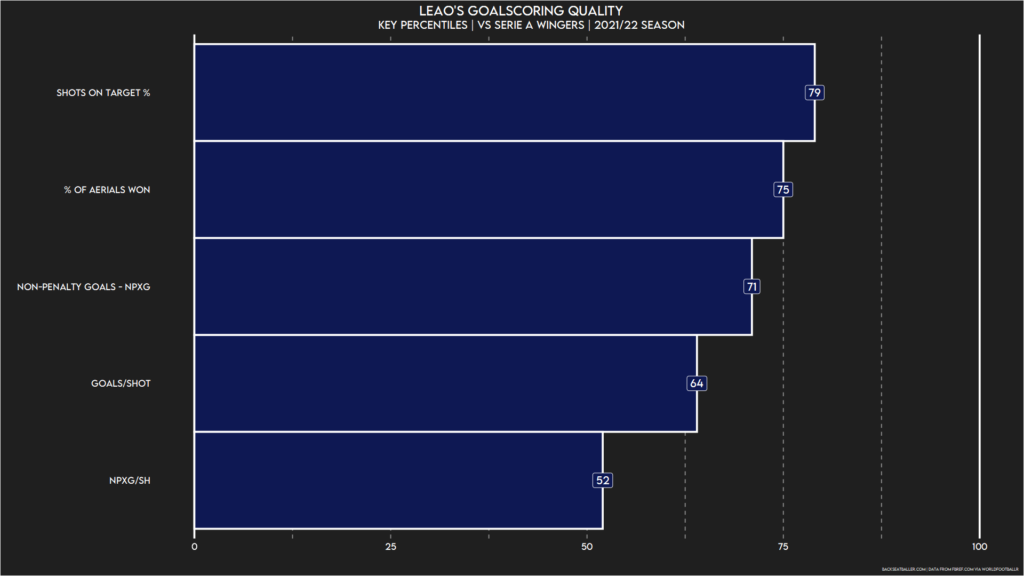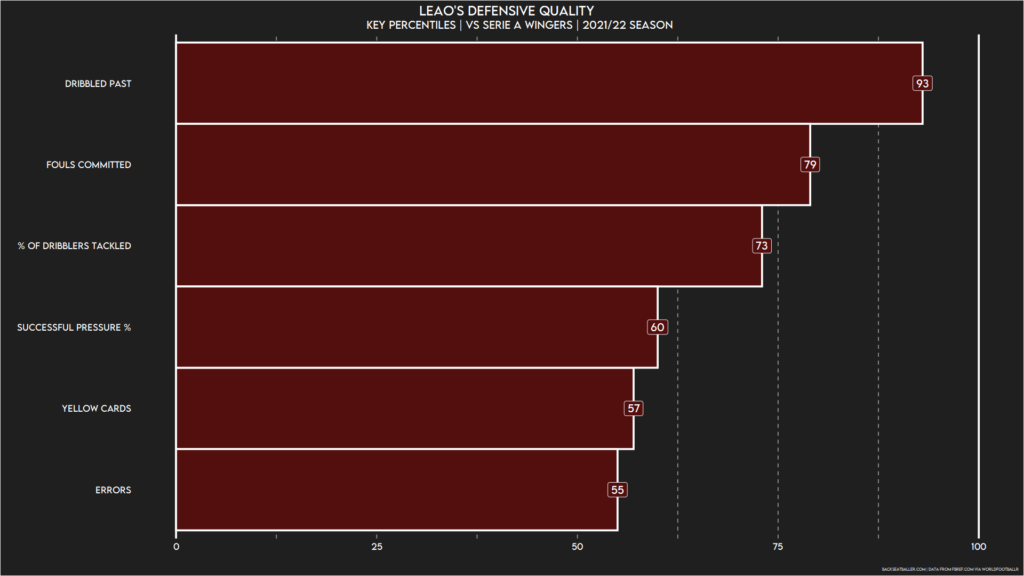22nd May 2022. The fulltime whistle blows at the Mapei Stadium, leading to red and black cheers across the stadium. The season has ended, and AC Milan have won their first Serie A title in a decade. A trophy presentation followed as the Rossoneri celebrated their official return to the pinnacle of Italian football. As the players walked out onto the stage in turn, one Portuguese winger received an especially loud cheer from the fans.
Rafael Leão had faced some scrutiny over his first two seasons in Milan after joining from Lille in 2019. His 12 goal contributions in the 2020/21 season were an upgrade on the 7 involvements the year prior, but there was an air of doubt as to whether he had lived up to the £26.6 million pound fee paid for the now 23-year-old. Leão, however, has successfully managed to quell those fears over the past season.

Immediately, 10 goals and 11 assists in the Serie A last season is already a point of praise for the winger, with those numbers putting him in 4th and 6th place for assists and goal involvements respectively. The pizza chart above tells an even better story of Leão’s good season. The 6 scores, categorised by area of his game and quantity or quality, are based off Leão’s percentile rankings in key metrics compared to other Serie A wingers. High rankings in goalscoring volume and quality as well as possession volume and defensive quality represent a player that can be relied on to produce a high level of attacking output, whilst also influencing a game through his actions with and without the ball. Zooming in on the categories lets us see what exactly Leão has done this season to gain so many plaudits.

Whilst his 74 out of 100 score for goalscoring volume can be put down those 21 goal involvements, a score of 66 for goalscoring quality is not much of a surprise either when looking at all of Leão’s attacking numbers from last season. Managing to hit the target with 39.2% of the shots he’s taken places him in the 79th percentile, or top 21% of Serie A wingers. With each shot having an average of 0.09 xG, the fact that Leão can consistently hit the target is much more impressive. His finishing quality is quantified in his 1.88 xG overperformance over the season – Leão is scoring much more than his expected goals would suggest he should be. A 75th percentile ranking for aerial duel win rate shows that he can be useful with his head as well as his feet.

The shot map above shows the location and xG of Leão’s 11 goals. The larger and opaquer the circle, the better the shooting chance. All of Leão’s goals have come from inside the box (apart from one very tiny 0.02xG sized dot representing a screamer against Cagliari), mainly towards the centre left of the 18-yard box, which makes sense considering the left winger’s tendency to cut inside before making a vital pass or taking a shot. A decent proportion of his goals from further left have come from lower xG chances, so his ability to turn a bad position into a good goal should not be underestimated. The positions of those goals paint Leão to fit into the “inside forward” role, one favoured by many top teams.

In possession, Leão is a game changer. Elite level rankings for completed dribbles, players dribbled past and carries into the penalty area placed against low rankings for passes under pressure suggest that Leão’s favoured playstyle is one that involves beating his man through quick, tricky dribbles in order to break a press or block before heading into the penalty area and playing a ball across the face of the goal for an assist or taking on a shot himself – this can be seen through most of Leão’s assists and goals this season. Being so effective on the ball makes him not only an asset for breaking down low blocks but also a very good transitional player who could make any counter attacking team more dangerous.

There is a large disparity between Leão’s scores for defensive quality and defensive volume, and this comes as no surprise. Leão ranks in the 3rd percentile for successful pressures (2.69 per 90) and in the 18th percentile for tackles and interceptions (1.55 combined per 90) but is in the top 7% when it comes to not being dribbled past (0.45 per 90) as well as ranking in the 73rd percentile for tackle success rate against dribblers (38.1%) and in the 60th percentile for pressure success rate in general (29.2%). What these numbers provide is good evidence that Leão is not a liability in the press when needed – a player wouldn’t have such high numbers in terms of quality if they were – but it cannot be said definitively that Leão is particularly outstanding at pressing either with such a small sample size of pressures to go by.
Ranking bottom within a starting eleven for pressures is never a good thing. However, playing in a team like AC Milan, who ranked top in attacking third pressures amongst Italian clubs last season as well as second across the whole pitch, means that a lack of engagement in the press can be covered up effectively. His low defensive output may not be his fault directly; opposition attacks simply don’t go in his direction, leaving little to no necessary defensive responsibility. Either way, for a team like Liverpool, Bayern Munich, or Erik ten Hag’s new United, this perceived passivity in the press may lead to Leão being somewhat of a risky choice.
With transfermarkt.com rating the Portuguese winger at £63 million, anything like a recent link to Chelsea is very unlikely to lead to a departure from Milan. With his contract expiring in 2024 however, unless Leão decides to commit his future to the Rossoneri, this dynamic and precise inside forward may be shining on a new stage in a season or two.

